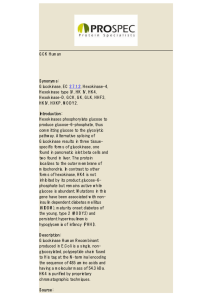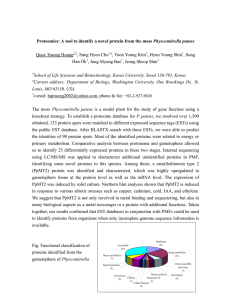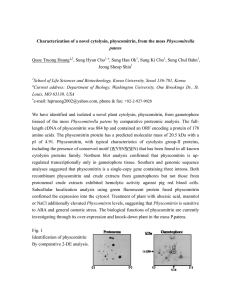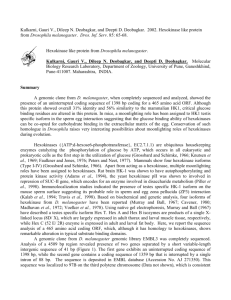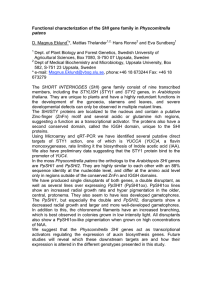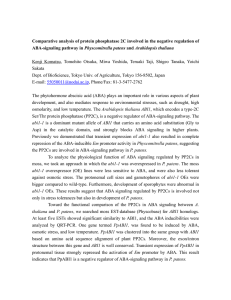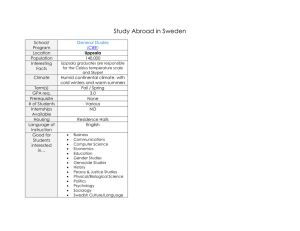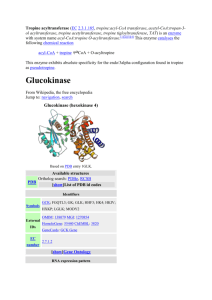Physcomitrella patens. Anders Nilsson , Tina Olsson
advertisement
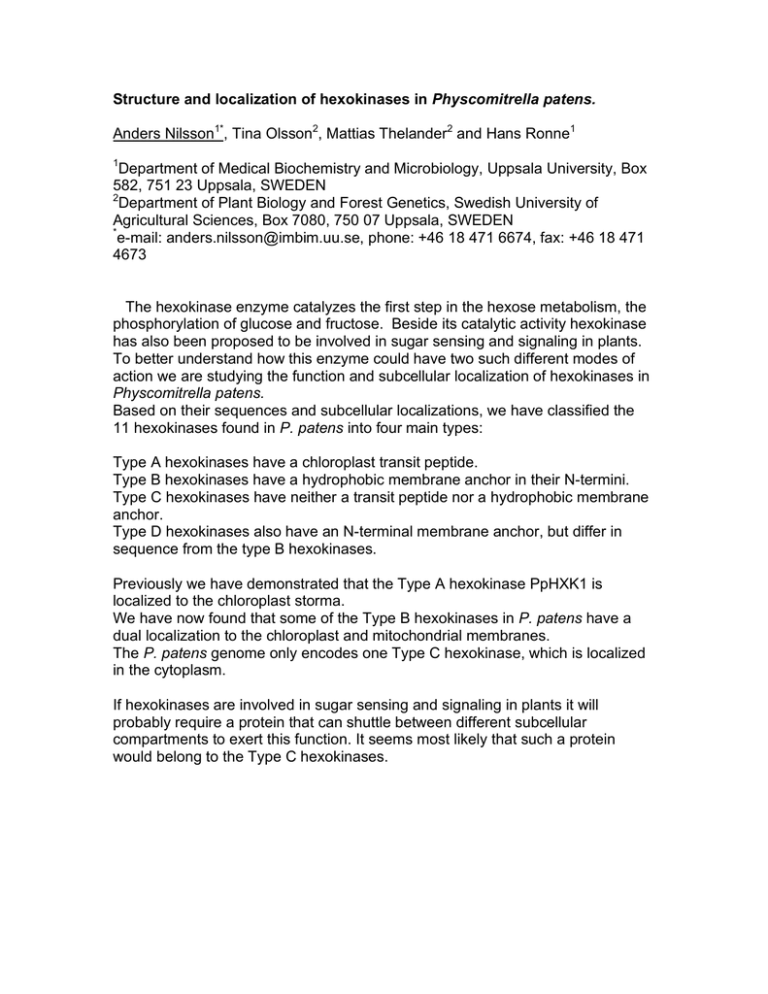
Structure and localization of hexokinases in Physcomitrella patens. Anders Nilsson1*, Tina Olsson2, Mattias Thelander2 and Hans Ronne1 1 Department of Medical Biochemistry and Microbiology, Uppsala University, Box 582, 751 23 Uppsala, SWEDEN 2 Department of Plant Biology and Forest Genetics, Swedish University of Agricultural Sciences, Box 7080, 750 07 Uppsala, SWEDEN * e-mail: anders.nilsson@imbim.uu.se, phone: +46 18 471 6674, fax: +46 18 471 4673 The hexokinase enzyme catalyzes the first step in the hexose metabolism, the phosphorylation of glucose and fructose. Beside its catalytic activity hexokinase has also been proposed to be involved in sugar sensing and signaling in plants. To better understand how this enzyme could have two such different modes of action we are studying the function and subcellular localization of hexokinases in Physcomitrella patens. Based on their sequences and subcellular localizations, we have classified the 11 hexokinases found in P. patens into four main types: Type A hexokinases have a chloroplast transit peptide. Type B hexokinases have a hydrophobic membrane anchor in their N-termini. Type C hexokinases have neither a transit peptide nor a hydrophobic membrane anchor. Type D hexokinases also have an N-terminal membrane anchor, but differ in sequence from the type B hexokinases. Previously we have demonstrated that the Type A hexokinase PpHXK1 is localized to the chloroplast storma. We have now found that some of the Type B hexokinases in P. patens have a dual localization to the chloroplast and mitochondrial membranes. The P. patens genome only encodes one Type C hexokinase, which is localized in the cytoplasm. If hexokinases are involved in sugar sensing and signaling in plants it will probably require a protein that can shuttle between different subcellular compartments to exert this function. It seems most likely that such a protein would belong to the Type C hexokinases.
